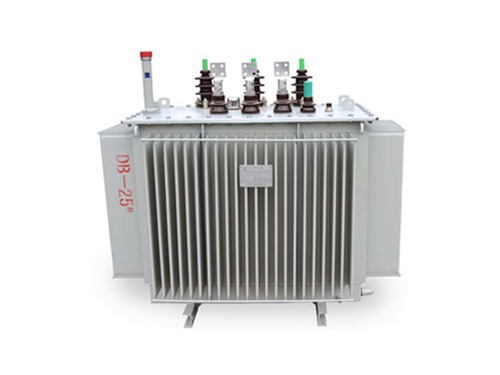

Inquiry

Project Review

Machining

Quality Control

Pass/Fail

Delivery
Oil-immersed transformers come in a wide variety of models and specifications, covering different capacities, voltage levels, and structural types. The following provides a detailed explanation from five aspects: model classification, parameter ranges, structural characteristics, energy efficiency grades, and selection recommendations.

I. Model Classification and Representative Products
1. Non-enclosed Oil-immersed Transformers
Models: S8, S9, S10, S13, etc.
Characteristics: Simple structure, low cost, suitable for general applications in industrial and mining enterprises, agriculture, and civil buildings.
Example: S13-1000/10 (capacity: 1000 kVA, voltage level: 10 kV).
2. Enclosed Oil-immersed Transformers
Models: S9-M, S10-M, etc.
Characteristics: Enhanced sealing performance to prevent oil contamination and chemical erosion, suitable for harsh environments such as petroleum and chemical industries.
Example: S9-M-630/10 (capacity: 630 kVA, fully sealed structure).
3. Sealed Oil-immersed Transformers
Models: BS9, S11-MR, SH, SH12-M, etc.
Characteristics: Utilize corrugated tank full-sealing technology to automatically adjust oil volume changes, enabling maintenance-free operation and suitable for various power distribution scenarios.
Example: SH15-M-500/10 (capacity: 500 kVA, amorphous alloy core, energy-saving type).
II. Parameter Ranges and Specifications
1. Capacity Ratings
Small Transformers: ≤630 kVA (e.g., 160 kVA, 250 kVA, 400 kVA).
Medium Transformers: 800 kVA–6300 kVA (e.g., 800 kVA, 1000 kVA, 1600 kVA).
Large Transformers: 8000 kVA–63000 kVA (e.g., 10000 kVA, 20000 kVA).
Extra-large Transformers: ≥90000 kVA (e.g., 120000 kVA, 180000 kVA).
2. Voltage Levels
Input Voltage: 220 kV, 110 kV, 35 kV, 10 kV (commonly used).
Output Voltage: 35 kV, 10 kV, 6 kV, 0.4 kV (commonly 10 kV/0.4 kV).
3. Dimensions (Examples)
1000 kVA Transformer: Length × Width × Height ≈ 1865 mm × 1295 mm × 1650 mm (specific dimensions vary by model and manufacturer).
6300 kVA Transformer: Length × Width × Height ≈ 6400 mm × 5600 mm × 5900 mm (110 kV class).
III. Structural Characteristics and Design
1. Core Materials
Utilize imported cold-rolled silicon steel sheets or amorphous alloys to reduce no-load losses and operational noise.
Example: The core losses of the S11 transformer are reduced by over 30% compared to the S9 model.
2. Winding Structures
High-Voltage Side: Multi-layer cylindrical design with a Dyn11 connection group to minimize grid harmonic effects.
Low-Voltage Side: Configured with double-layer cylindrical or spiral windings based on capacity to balance mechanical strength and heat dissipation performance.
Example: The S11-2000/10 transformer features a multi-layer cylindrical design on the high-voltage side and a spiral winding on the low-voltage side.
3. Cooling Methods
Oil-Immersed Natural Cooling (ONAN): Suitable for small to medium-capacity transformers, relying on natural convection for heat dissipation.
Oil-Immersed Forced Cooling (ONAF): Optional for large-capacity transformers, using fans for forced heat dissipation.
IV. Energy Efficiency Grades and Standards
1. Energy Efficiency Classification
Grade 1 (Highest Efficiency): S22, SCB18 (lowest losses, significant energy-saving effects).
Grade 2 (Balanced Performance and Cost): S20, SCB14.
Grade 3 (Basic Energy-Saving Models): S13, SCB12.
Example: The S22-M-630/10 (Grade 1 efficiency) reduces no-load losses by approximately 20% compared to the S13 model.
2. Applicable Standards
National Standards: GB 1094 (General Requirements for Power Transformers), GB/T 6451 (Technical Parameters for Three-Phase Oil-Immersed Transformers).
Industry Specifications: GB/T 15164 (Load Guide), JB/T 501 (Test Guide).
V. Selection Recommendations
1. Capacity Matching
Reserve a margin based on load type; motor starting requires an additional 20%–30% capacity.
Example: To drive a 500 kW motor, an 800 kVA transformer is recommended (accounting for starting current).
2. Voltage Compatibility
Ensure the high-voltage side matches the mine grid voltage and the low-voltage side supports the equipment connection method (Y/Δ).
Example: For a mine grid voltage of 10 kV and equipment requiring 400 V (Δ connection), a 10/0.4 kV transformer should be selected.
3. Environmental Adaptability
Altitude: ≤1000 m (derating required for higher altitudes).
Temperature: Maximum ambient temperature of +40°C, minimum of -25°C (forced oil circulation cooling required for high-temperature environments).
Humidity: Relative humidity ≤95% (at 25°C).
Protection Level: IP45 (dust and water resistance) or higher (e.g., IP54 for specific scenarios).
4. Special Requirements
Explosion-Proof Requirements: For mine environments, select explosion-proof transformers (e.g., ExdIIBT4).
Customization: Contact manufacturers for non-standard capacities, voltages, or tap ranges (e.g., ±4×2.5%).

The main products include oil immersed transformers, dry-type transformers, power transformers, amorphous alloy transformers, mining transformers, box type substations, high and low voltage switchgear and supporting products
Add: South Head of Mount Huangshan Road, Liaocheng Development Zone, Shandong, China
Email:sdbyqcj@163.com
Tel: +86 13706354419